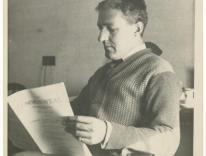Today's New York Times has a lovely review by art critic Holland Carter of the exhibit Radiant Light: Stained Glass from Canterbury Cathedral, now on view at the Cloisters in upper Manhattan. The windows, originally designed for a shrine to Canterbury's own St. Thomas Becket, depict ancestors of Christ -- most of whom you won't find depicted in many contemporary churches. Their beauty has Cotter waxing metaphorical:
Medieval Christian religious art, like Christian theology, is based on a complicated interweaving of darkness and illumination. Church interiors were both sunk in shadow and saturated with light: sunlight filtering in through windows; candlelight glinting off gold vessels; halos radiating from images of saints. The idea that light penetrated glass but left it unbroken was taken as a symbol of the virgin birth. Churches were conceived of as truth-holding boxes of light, but also as power stations, feeding light into the world.
The review is as much meditation as appreciation, and well worth reading.
Stained glass windows, especially very old ones, are one of the best reasons to poke your head into Europe's great old churches. As for these windows, you can study them online at the Cloisters website, but I'm hoping to make a pilgrimage to see them in person. The exhibit is there through May 18, which means it can wait until Aprille with his shoures soote / The droghte of Marche hath perced to the roote. On the other hand, with the winter we've had, March might be the perfect time to seek out a little extra light.


